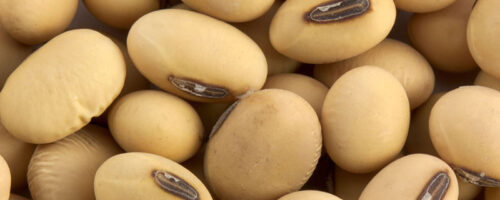
Mato Grosso, Brazil
How is it produced?
Soybean has become an important food staple for the developing world in the fight against poverty. USA, Brazil, Argentina and China – accounting for almost 90% of world output. Asia – excluding China – and Africa, the two regions where most of the food insecure countries are located, together account for only 5% of production. (Thoenes 2004) The United States was the largest producer of soybeans in the world but has since been replaced by Brazil. The main reason for this is the ideal growing conditions and the lower cost which is 11-28 percent lower than the costs of growing in the United States. (Dohlman 2016) Since 1996 China has been the primary export point of landing for Brazilian soy. In Canada many of these products are used in specialty diets, like gluten free and plant based/vegetarian, because of the nutritional value it brings for these groups. In the developing world they play an even more important role as what we as Canadian would consider a normal diet is not available as widely or as affordably as they are in Canada, soybeans are emerging as a more than sufficient alternative to help fight poverty in many places where food insecurity is an issue. (Thoenes 2004)
Describe the supply chain to the store shelf in Canada:
Most of these farms are far from the ports where 90% of Brazilian soybeans are shipped. That means there is a transportation network that has been established to bring these goods from the farm to their destination. First the beans are taken from their farm to a local distribution warehouse, where beans from multiple farms are grouped together. From the warehouse the beans are transported, mainly by truck but in some regions by rail, to the port warehouses. These warehouses, even though they are on public ports, are owned by private industry. Shortly after arriving they get loaded onto ships to be taken to their international destinations, mainly in China or Europe. Most of the soy products exported are raw beans to be processed into oil or soymeal to produce a variety of soy products that are sold in the country and exported to other markets. Once delivered to these market they are produced into the items that we see on Canadian grocery stores. Traditional soy foods – such as miso, tofu, tempeh, soya sauce etc. – are derived either directly from the whole fresh bean or after processing of the bean into soymilk and are consumed either in fermented or non-fermented form. In the recent years, the range of soy foods has expanded to include fresh beans and sprouts, dairy substitutes such as soy milk, cheese etc., grain products such as soy bread, pasta and flour, meat substitutes, and soy spreads and pastes. (Thoenes 2004) These products arrive in Canada from places like China were they are produced into the finished products, not directly from a producer like Brazil.
What is the power balance between the producer and seller?
Brazilian soybean production is dominated by a handful of large corporations. About 80% of the production in Brazil is by four major corporations and the other 20% by smaller cooperatives. (Fliehr 2013) These farms are located all over Brazil starting in the south and expanding in the western and northern regions into the Brazilian Savannah and the deforested areas of the Amazon.
Can you recommend changes to the system to improve the balance?
References/Resources:
Andrew, Robbie M., Karstensen, Jonas & Peters, Glen P. (2013) Attribution of CO2 emissions from Brazilian deforestation to consumers between 1990 and 2010. Environ Res Lett, 8 (024005), 1-7, https://iopscience.iop.org/article/10.1088/1748-9326/8/2/024005
Dohlman, Eric., et al (2016) Corn and Soybean Production Costs and Export Competitiveness in Argentina, Brazil and the United States. USDA Economic Research Service. www.ers.usda.gov/publications/eib-economic-information-bulletin/eib-154
Fliehr, Olivia (2013) Analysis of transportation and logistics processes for soybeans in Brazil. https://www.econstor.eu/bitstream/10419/78249/1/75187552X.pdf
Thoenes, P. (2004). The role of soybean in fighting world hunger. FAO Commodities and Trade Division, Basic Foodstuffs. https://www.fao.org/publications/card/en/c/ea0e7b93-fb20-4c62-b8fd-6e7b076dfa79/

